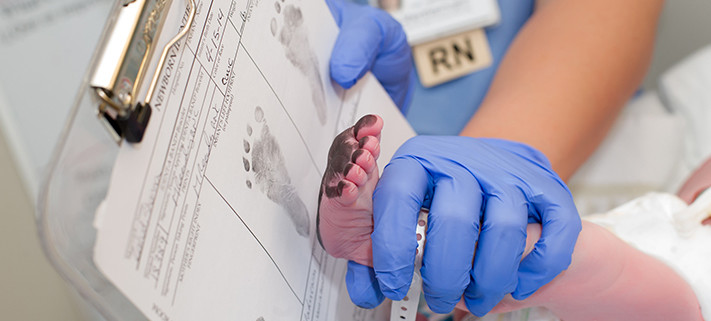From a secular bedside to a Christ-centered classroom
By Jessica Washburn, instructor of nursing at Wisconsin Lutheran College
I pursued a career in nursing through a public university after attending a Lutheran Elementary School and a Lutheran High School. Four years later and having earned a BSN degree, I entered the secular world of nursing. As a nurse in the Midwest and the West Coast, I encountered co-workers and patients from many different countries, speaking different languages, and believing in different religions and gods.
My family returned to Wisconsin a year ago, and I was asked to adjunct at Wisconsin Lutheran College’s (WLC) School of Nursing. I have always enjoyed working with student and graduate nurses; teaching these WLC students in a clinical setting did not disappoint. I accepted a full time call to WLC in August. Higher education is definitely a new area of nursing that I have come to enjoy and about which I still have much to learn. I am impressed that my students come to an 8:00 a.m. Monday morning lectured prepared and ready to learn.
I am now able to work openly from a Christ-centered viewpoint knowing that my students and co-workers understand one another’s beliefs and the college’s mission. I can stand in front of the classroom and tell these students what a wonderful world of nursing God has made for us, despite them learning and seeing disorders and diseases of each body system.
The opportunity to attend chapel each day is an aspect I never anticipated being part of my daily life. Attending chapel is something I was never able to do in college. During difficult and stressful times, chapel services allow the students and I to take a break and focus on what really matters in life. This past week, the students and I were discussing the differences in doctrine that we at WLC believe compared to other Christian entities to which they’ve been exposed. This open communication of religion is an aspect of teaching at WLC these students would not be able to encounter at many other colleges.
I often reflect upon what I have encountered as a bedside nurse over the past decade. I remember profanity being yelled by colleagues (both physicians and nurses) and having families cry over the passing of their loved one, believing in everything but Christ. These were rough days, but there were also rewarding days. I enjoyed watching my own Pastor come to my unit and have a devotion with a patient—realizing in the semi-private room the other patient behind the curtain is intently listening. Being able to teach in a Christian environment has opened my eyes to the importance of Christ-centered education. The value of daily chapel, faculty meetings that start with a devotion, and knowing my students can receive Christian answers from any professor is a gift from God. I am now a part of WLC, helping these students prepare for lives of Christian leadership as nurses in a secular world.
SPECIAL MINISTRIES
Learn about the ministry work of WELS Special Ministries.
SUPPORT SPECIAL MINISTRIES
Support the ministry work of WELS Special Ministries.

